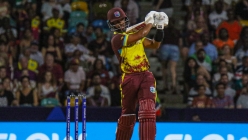Views
Instant gratification is over. How about some serious analysis?
2008 Jun 02 by Suresh Menon
By Suresh MenonHow much of the Board's reported profit of 3.5 billion will be ploughed back into the game, to ease the path of the players and make watching it a pleasurable exercise in our wholly inadequate stadiums remains to be seen. To see the IPL success only in dollar terms is short sighted. We need to examine the fallout in greater detail.
Time lends perspective, and it is usually wise to wait before pronouncing judgement on something new. But this is Twenty20 we are talking about, and if we don't pass instant judgement on it, what sense does it make? It is boring, repetitive, lacks subtlety, makes no allowance for the ebbs and tides of a cricket match, and inspires a kind of breathlessness in the commentators that jars. Everything is king-size, everybody is a star. All players are guaranteed at least 15 seconds of fame, batting, bowling, fielding, or indeed responding sagely to the commentators' questions on the field of play.
It can also be a riveting spectacle, even if Lalit Modi gives the impression that television audiences are clamouring just to watch him smile, talk, eat, drink or smoke a cigarette and not, say, Shane Warne bowl. If the IPL has shown anything, it is that it is what you make of it. Audiences identify with the man paid a million dollars who fails to perform - it is a projection of their highly-paid bosses at work who struggle to meet the bottom line. Or perhaps it invokes the same mixture of satisfaction and pity that I saw on the faces of those driving past a Rolls Royce which had hit a concrete wall on the side of the road.
Unlike many who were skeptics at the start of the IPL tournament and then fell in love with the format, my journey was in the opposite direction. I began as a believer, and despite missing some games in-between, finished as a nay-sayer. At one point, I switched on the TV and couldn't tell if I was watching the match or its highlights package. Twenty20 will have to keep evolving constantly if it is to retain spectator interest. Even the instant-gratification generation can have too much of a good thing.
Cricketing pornography is no different from the other kind - all those close-ups and getting in and pulling out and body positions and orgasmic finishes can pale after a while. Modi might have realized this, and hence his call for two tournaments in a year. The idea seems to be to squeeze as much money out of it before it collapses under the weight of its own hype. Take the money and run is the theme of the IPL. Let's not invest it with great moral purpose. Squeezing the money is one thing, squeezing it till only its essence - whatever that may be - remains is quite another. To what level can you reduce the game and keep it interesting? Will anyone swallow six-a-side ten over pills?
What will change is the way teams are selected. There will be far greater emphasis on individual records, significant statistical deviations between individuals and groups of players (e.g. if it emerges that teams with both Rahul Dravid and Robin Uthappa playing do significantly better than those in which they appear separately). Individual records may be viewed from different angles and team selectors and managers will have a far greater range of information to help them choose teams. Gut feeling, and icon players make no business sense.
How much of the Board's reported profit of 3.5 billion will be ploughed back into the game, to ease the path of the players and make watching it a pleasurable exercise in our wholly inadequate stadiums remains to be seen. To see the IPL success only in dollar terms is short sighted. We need to examine the fallout in greater detail.




